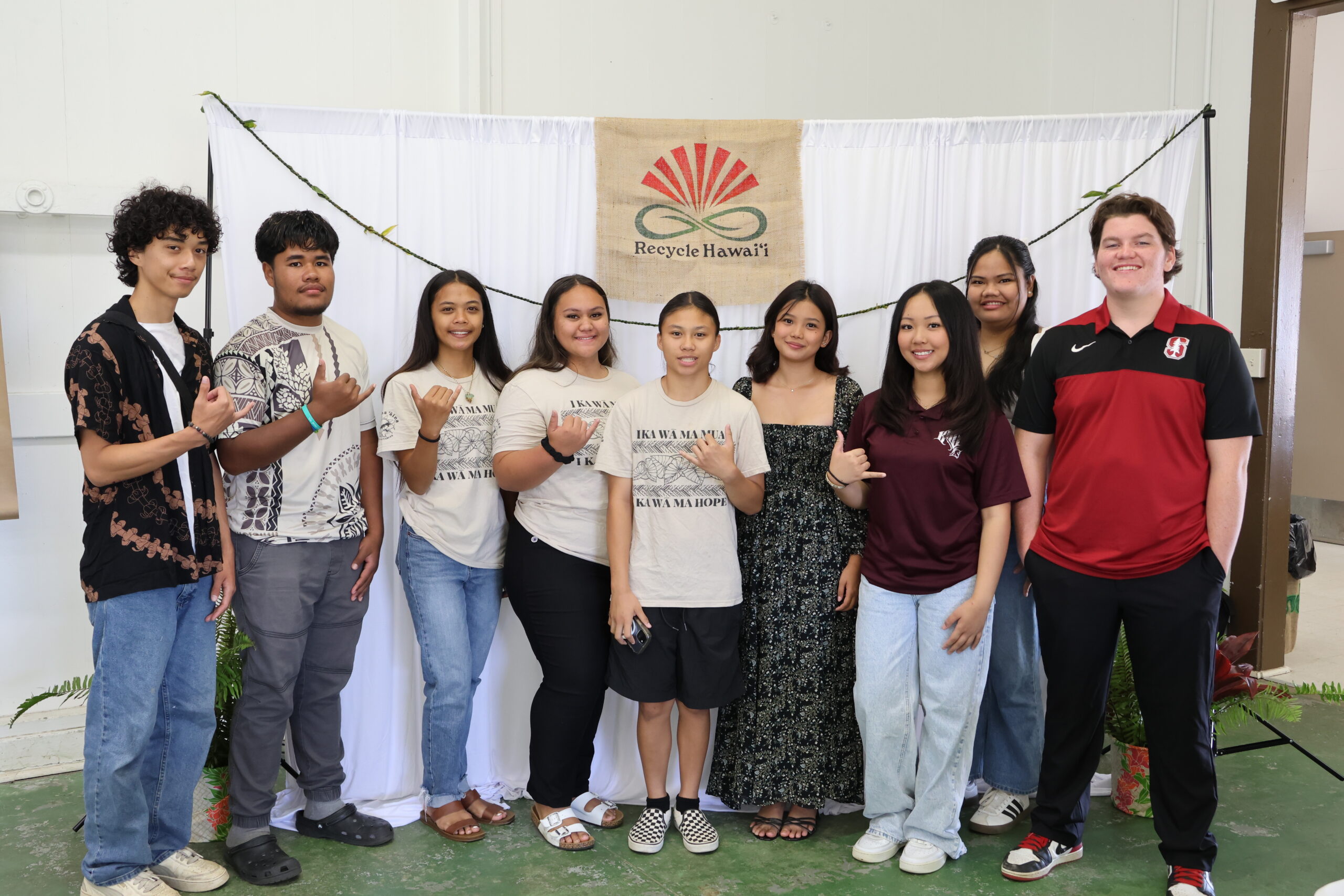Youth from Hawaii and Louisiana Unite to Tackle Plastic Pollution
Bioneers | Published: October 21, 2025 IndigeneityYouth Article
When negotiators met to finalize the United Nations Global Plastics Treaty in mid-August, the desperate need to stem the growth of toxic plastic pollution rested on the promise that a binding agreement could finally curb the petrochemical industry’s destruction. But as the talks collapsed under the weight of corporate lobbying, youth movements around the world felt what many already knew: Governments aren’t going to save us from plastic. The treaty’s watered-down language — stripped of enforcement mechanisms and loopholes for “recycling technologies” that burn more than they restore — left young people realizing that true change must rise from the ground up.
“Every day we pick up the same plastic bottles that washed ashore last week,” said one student from Hawaiʻi Island. “We don’t need more negotiations. We need action.”
In the absence of international accountability, youth from Hawaiʻi and Louisiana are organizing their own alliances. For them, the fight against plastic is not an abstract policy — it’s a matter of life and death. In the shadow of one of the largest concentrations of petrochemical industries in the country, known as Cancer Alley in Louisiana, youth grow up under skies laced with the smoke of petrochemical plants that feed the world’s plastic addiction. On Hawaiʻi’s southern shores, that same plastic reappears as trash tides that bury the sand and choke honu. While global leaders were failing to deliver a treaty that matched the urgency of the crisis, these young organizers had already decided to build the future themselves — one community, one ordinance, one compost bucket at a time.
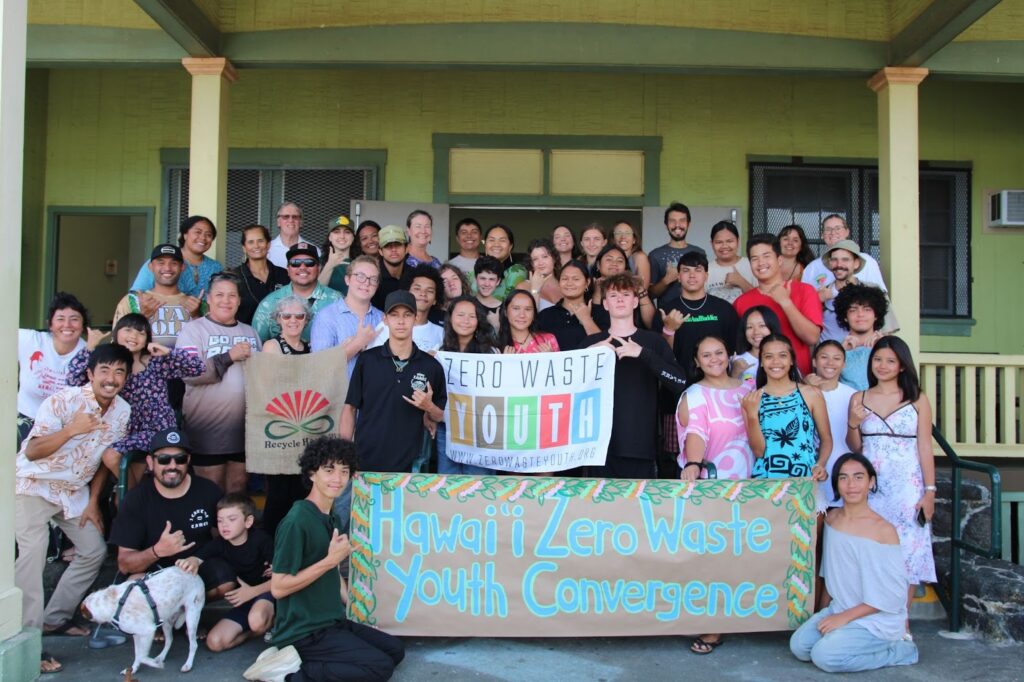
Youth from Oʻahu, Maui, and Hawaiʻi Island came together—through a gathering organized by Big Island youth—at the 2024 National Recycling Congress to confront the full life cycle of plastic waste, from its production in “Cancer Alley” to its accumulation on Hawaiʻi’s beaches.
The gathering, led by Recycle Hawaii and supported by an EPA Recycling Education & Outreach grant and the Bioneers Rights of Nature Initiative, created a space for young people to share stories, learn from one another, and build new strategies for environmental justice.
Bridging the Places Where Plastic Hurts
Recycle Hawaii works with youth on plastic reduction policies and recycling advocacy along the island’s south shores, far from tourist beaches and close to the ecological disaster locals call “trash beach.” With its new EPA grant, the organization is uniting youth from communities most impacted by plastic pollution at both ends of its life cycle: where it’s made and where it ends up.
To bridge the story from production to pollution, Recycle Hawaii partnered with two Louisiana youth groups: Brilliant Mindz and Rural Roots Louisiana. Their communities in Bogalusa and Donaldsonville live in the shadow of major industrial sites — a paper mill, a nitrogen plant, and the corridor known as Cancer Alley — where pollution and poverty are part of daily life.
Recycle Hawaii used its Youth Ambassador grant from the Bioneers Rights of Nature Initiative to sponsor the travel of four Louisiana youth to attend the National Recycling Congress, joining their Hawaiian counterparts in dialogue and collaboration.
Youth Voices Lead the Way
Over the week-long gathering, youth from both states “talked story,” sharing the realities of pollution in their communities and learning about zero-waste initiatives, systems thinking, and Rights of Nature laws. Together, they explored how to turn their lived experiences into policy change.
“To watch our haumāna present in front of the NRC attendees was a huge privilege,” said Ulu Makuakāne, Recycle Hawaii educator. “You could see and feel their kūpuna throughout the presentation. They were grounded, centered, and knew they were representing something bigger than themselves.”
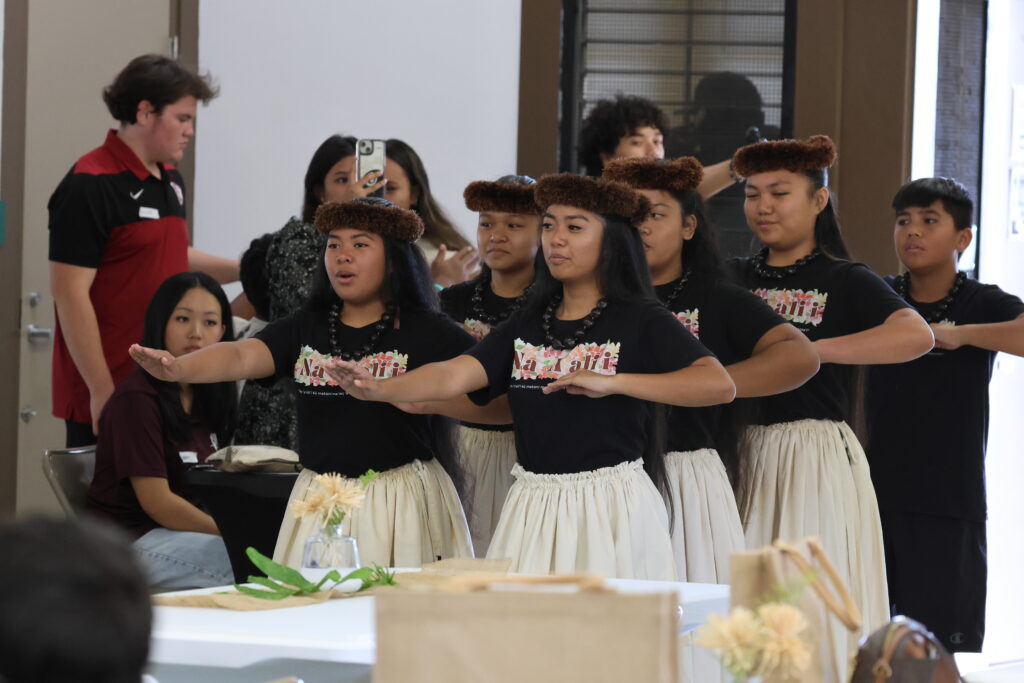
“This was one of those once-in-a-lifetime moments that clearly inspired these students, showing them that achieving big things is possible,” said Justin Canelas, Executive Director of Recycle Hawaii. “It’s been truly special to watch them grow into young professionals. For this group, the sky is the limit.”
Bill 83: Hawaiʻi Island’s Push to Ban Single-Use Plastic
While world leaders stall, Hawaiʻi County youth are drafting the future. Bill 83, an ordinance to ban single-use plastic in food service, is their rallying cry. When the bill appeared before the county council, the same youth who sort cafeteria trash and tended compost bins showed up to testify. They spoke not as students but as experts in lived experience.
“This generation isn’t afraid of change,” said Laura Acasio, of the County Office of Environmental Resilience. “They know it’s necessary — for their health, their island, and their future. What they’re doing is shifting the narrative from fear to responsibility.”
Acasio reminded them that government is a tool they can wield. “You have civic agency,” she told them. “Your voice matters. There’s nowhere for the trash to go — it’s an island. That means we must do better.”
For the youth of Kaʻū, Bill 83 represents more than a plastic ban — it’s a paradigm shift. It moves the county’s 2007 Zero Waste Resolution from intention to action. The students understand that “disposable” only works when you have somewhere to throw it away — and their landfill is nearly full. With their testimony and organizing power, they’re proving that local legislation can carry the moral weight that global treaties have failed to deliver.
Building a Movement for Change
Thanks to funding from the EPA and the Bioneers Rights of Nature Initiative, these youth leaders will continue to meet in the coming years to connect the worlds of waste production and pollution. Together, they are raising a rallying cry for a future where no communities are called “Cancer Alley” and no beaches are known as “trash beach.” Their work reflects a generation determined to turn the tide — from waste and harm to restoration and justice.
Malama ʻĀina Compostables: The Kaʻū Youth Movement
In the rural district of Kaʻū, a group of teenagers decided to start where change was most tangible — their school cafeteria. They called themselves Malama ʻĀina Compostables, guided by the belief that taking care of the land begins with what we throw away. Partnering with a local pig farmer, they began collecting leftovers, diverting nearly 19,000 pounds of food waste from the landfill in just two years.
“Sometimes people think you have to start big,” said Kona, one of the youth organizers. “But we started with lunch trays. That’s how you build momentum — one meal, one bin, one community at a time.”
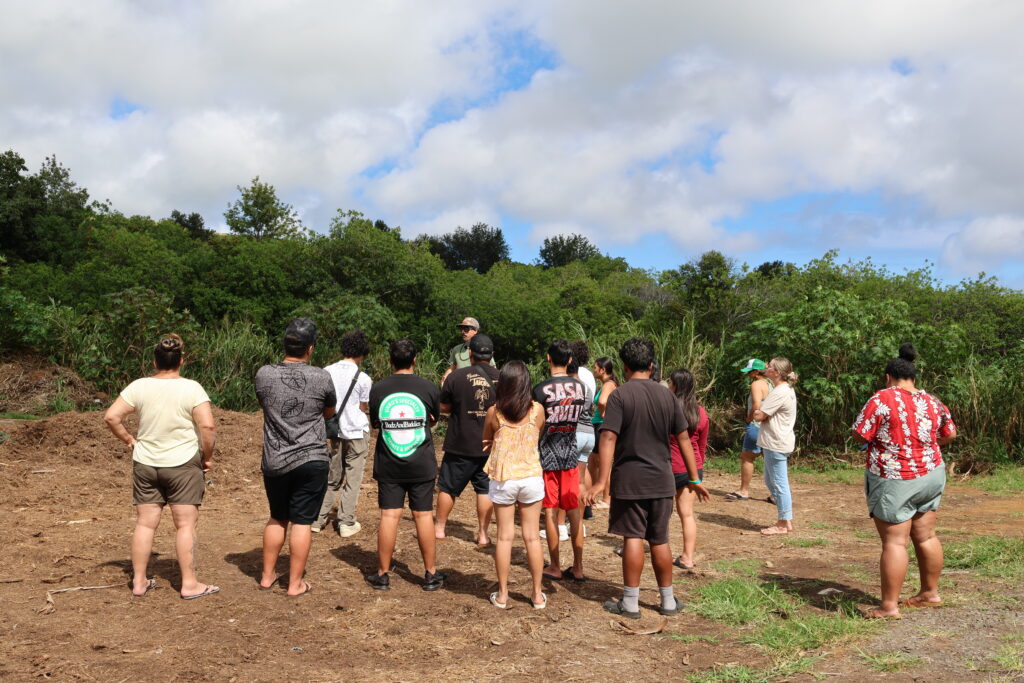
As their compost program grew, the youth realized their school was a model for the island. They began presenting to principals, holding waste audits, and urging other schools to follow. Their message is both practical and spiritual: waste is not just a management issue, it’s a relationship issue. “You take care of your home, and your home takes care of you,” said one student. “This isn’t just a place to visit. It’s our house.”
The Malama ʻĀina crew is showing Hawaiʻi, and the world, what zero-waste leadership looks like when it’s rooted in aloha ʻāina. They’ve proven that youth-led initiatives can fill the policy gaps left by global systems, embodying resilience not as a buzzword but as everyday practice.
The 70-Person Youth Convergence: From Cancer Alley to Kaʻū
This October, Recycle Hawaiʻi and Bioneers’ Rights of Nature Initiative helped bring together seventy young people for the Zero Waste Youth Convergence in Nāʻālehu — the southernmost town in the United States. Youth from every Hawaiian island gathered alongside visitors from Louisiana’s Cancer Alley, where petrochemical plants poison the air that feeds the world’s plastic addiction. It was a historic meeting of two ends of the same crisis — where plastic is born, and where it dies.
“We talk a lot about the circle of life,” said Recycle Hawaiʻi program director Ulu Makuakāne, “but here we were talking about the circle of waste — from production to pollution — and how youth can break that cycle.”
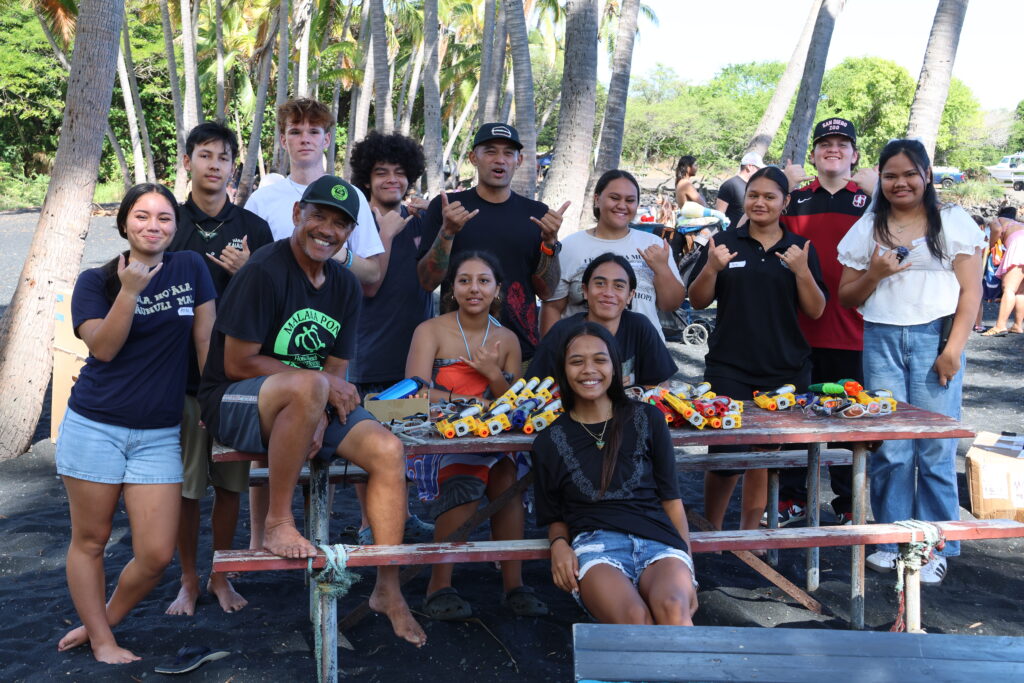
At the convergence, Louisiana delegate Lael Judson shared her story of being born premature due to chemical exposure. Her testimony stunned the room. “We thought plastic hurt the ocean,” one Hawaiian student reflected, “but she showed us how it hurts people first.”
For four days, youth built alliances across oceans, learning composting systems, cultural protocols, and civic advocacy side by side. They swam at Punaluʻu Beach, where sea turtles nest in black sand shadowed by corporate neglect. There, surrounded by the evidence of both natural beauty and man-made harm, they made a pact: to be the generation that ends the age of plastic.
“Their bond,” said Justin Canelas, Executive Director of Recycle Hawaiʻi, “showed what’s possible when we unite the places where plastic hurts the air and the places where it hurts the sea. This is how movements begin.”
Bioneers is honored to have supported this youth group’s efforts by providing funding for travel scholarships and to help cover the costs of their youth convergence. If you want to support more youth-led organizing, we welcome you to support our Indigeneity Program’s Native Youth Leadership program.
